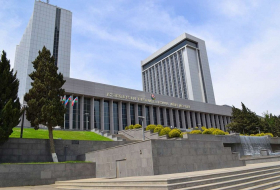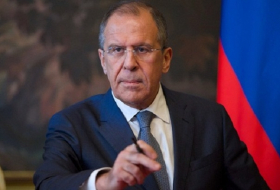“The Krakow meeting between the Azerbaijani and Armenian meetings focused on discussing expanding the OSCE’s monitoring mission in the conflict zone. The ministers gave their principal consent to the documents defining the activities of additional seven observers prepared by the mediators,” OSCE Minsk Group Co-Chair Igor Popov (Russia) said, AzVision.az reports citing APA.
“As you know, the decision was reached at the summit held in October 2017 in Switzerland on settlement of the Nagorno-Karabakh conflict to activate the negotiation process and achieve de-escalation along the contact line of troops. Accordingly, I had a series of consultations with my American and French colleagues, as well as with Personal Representative of the OSCEChairperson- in-Office Andrzej Kasprzyk and the Azerbaijani and Armenian foreign ministers.We also helped the ministers organize their two meetings, the last of which took place in Krakow. The meeting focused on reducing military risks, including expanding the OSCE monitoring mission in the conflict zone. The ministers gave their principal consent to the documents defining the activities of additional seven observers prepared by the mediators. Prior to the launch of such a mechanism for expanding the monitoring mission, there are still some technical details that must be agreed," said Igor Popov.
The Russian co-chair noted that more complicated aspects of the peace settlement of Nagorno-Karabakh conflict had been discussed during the meeting in Krakow: discussions on the more complicated aspects of and obstacles to the conflict’s peace settlement were continued during the negotiations. These aspects are nothing new; the two sides of the conflict have many times voiced them. These aspects have to do with to the issues of status and territorial integrity.
The ideas voiced by the co-chairs aim to find a solution acceptable to both parties. We hope to clarify Azerbaijan’s and Armenia’s positions within the framework of our meetings with the presidents during our visit to the region scheduled to take place in the first 10 days of February.
Asked if there are any specific offers or decisions on holding a meeting of the Azerbaijani and Armenian presidents and if this issue would be on the agenda of next visit to the region, the Russian co-chairman said that as mediators they favor continuing the political dialogue on a supreme level, to which there is no alternative..
“However, only the two sides can come to a compromising resolution to end the protracted conflict by demonstrating a political will. At the same time, for the next high-level summit to be held there needs to be careful preparations aimed at agreeing on what has to be the main subject of the meeting. We ourselves endeavor to give useful options to Baku and Yerevan. We’re going to discuss this during our visit to the region. When the sides are ready to meet, considering the two presidents’ work schedule, available options, including the summit’s date and format, could be offered,” he said.
The Nagorno-Karabakh conflict entered its modern phase when the Armenian SRR made territorial claims against the Azerbaijani SSR in 1988.
A fierce war broke out between Azerbaijan and Armenia over the Nagorno-Karabakh region of Azerbaijan. As a result of the war, Armenian armed forces occupied some 20 percent of Azerbaijani territory which includes Nagorno-Karabakh and seven adjacent districts (Lachin, Kalbajar, Aghdam, Fuzuli, Jabrayil, Gubadli and Zangilan), and over a million Azerbaijanis became refugees and internally displaced people.
The military operations finally came to an end when Azerbaijan and Armenia signed a ceasefire agreement in Bishkek in 1994.
Dealing with the settlement of the Nagorno-Karabakh conflict is the OSCEMinsk Group, which was created after the meeting of the CSCE (OSCE after the Budapest summit held in Dec.1994) Ministerial Council in Helsinki on 24 March 1992. The Group’s members include Azerbaijan, Armenia, Russia, the United States, France, Italy, Germany, Turkey, Belarus, Finland and Sweden.
Besides, the OSCE Minsk Group has a co-chairmanship institution, comprised of Russian, the US and French co-chairs, which began operating in 1994.
Resolutions 822, 853, 874 and 884 of the UN Security Council, which were passed in short intervals in 1993, and other resolutions adopted by the UN General Assembly, PACE, OSCE, OIC, and other organizations require Armenia to unconditionally withdraw its troops from Nagorno-Karabakh.
More about:
















































